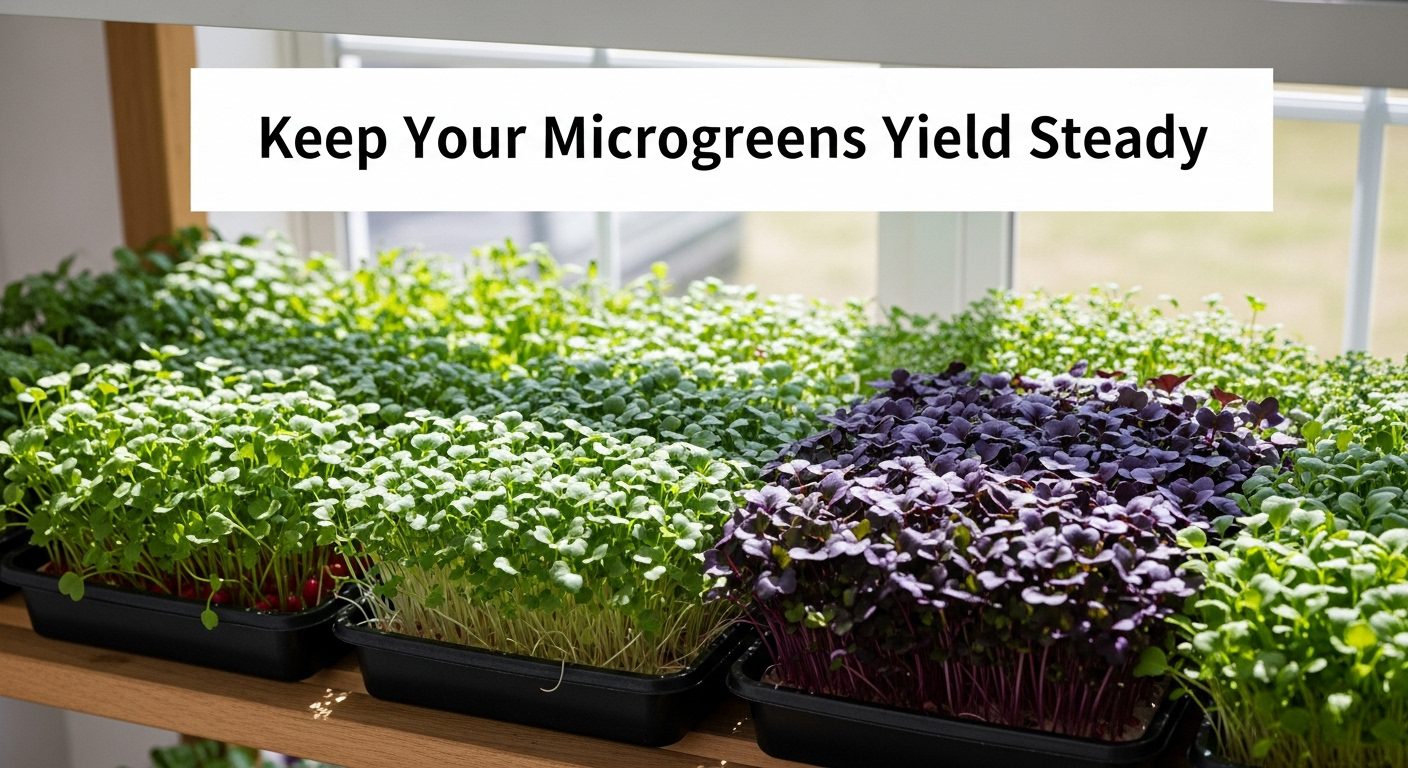
If you want your garden to stay bright and beautiful long after summer ends, add late-blooming flowers.
Plants like asters, chrysanthemums, goldenrod, and sedum grow strong when days get shorter. They bring color and help bees and butterflies find food. These flowers need little care but give big rewards.
Choose easy plants that thrive in sun or shade. Mix perennials and annuals for a lively look all season.
Make your garden a favorite place for pollinators with late summer blooms.
Asters and marigolds attract bees, while sedum helps butterflies. Planting these lowers work for you and adds fun for nature.
Try different colors and shapes to create a cheerful space. Your garden will shine even in fall. Start planning now for a colorful finish to the season.
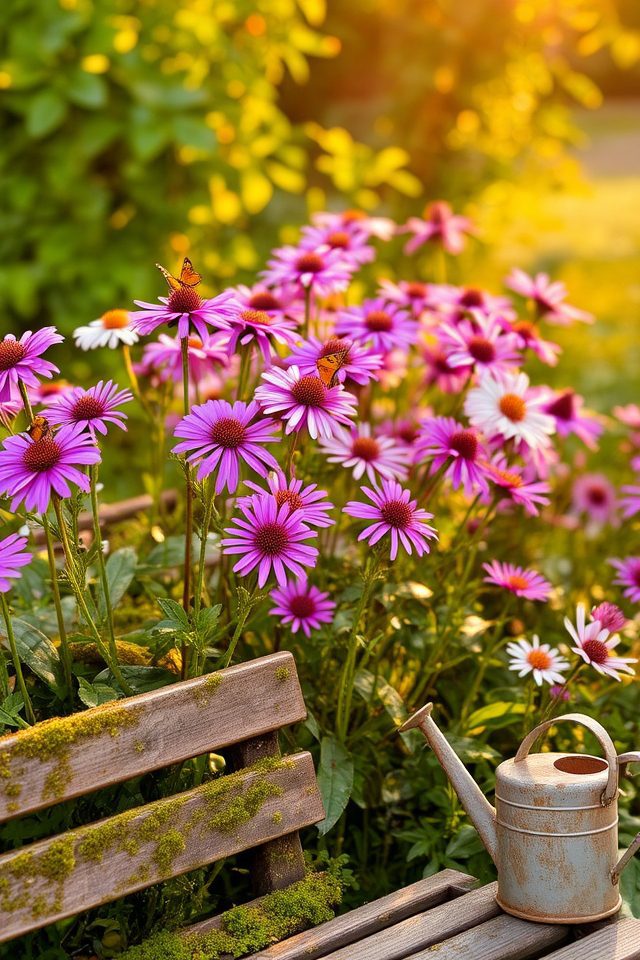
Asters are a splendid addition to any late summer flower garden, bringing vibrant color and charm as many other blooms begin to fade. These hardy perennials thrive in various conditions and bloom from late summer into fall, offering a stunning display of purples, pinks, and whites. Their daisy-like flowers attract butterflies and other pollinators, creating a lively atmosphere. Plant them in clusters for a bold impact or intersperse them among other late bloomers for a diverse and eye-catching landscape.

Planting chrysanthemums, or mums, can bring vibrant fall colors to your late summer garden. These hardy perennials bloom in various shades, including red, orange, yellow, and purple, providing a delightful display as summer fades. Ideal for borders or container gardening, chrysanthemums thrive in well-drained soil and require full sun. They also attract pollinators, adding life to your garden. With their charming blooms and easy care, chrysanthemums are a perfect choice for a stunning autumn landscape.
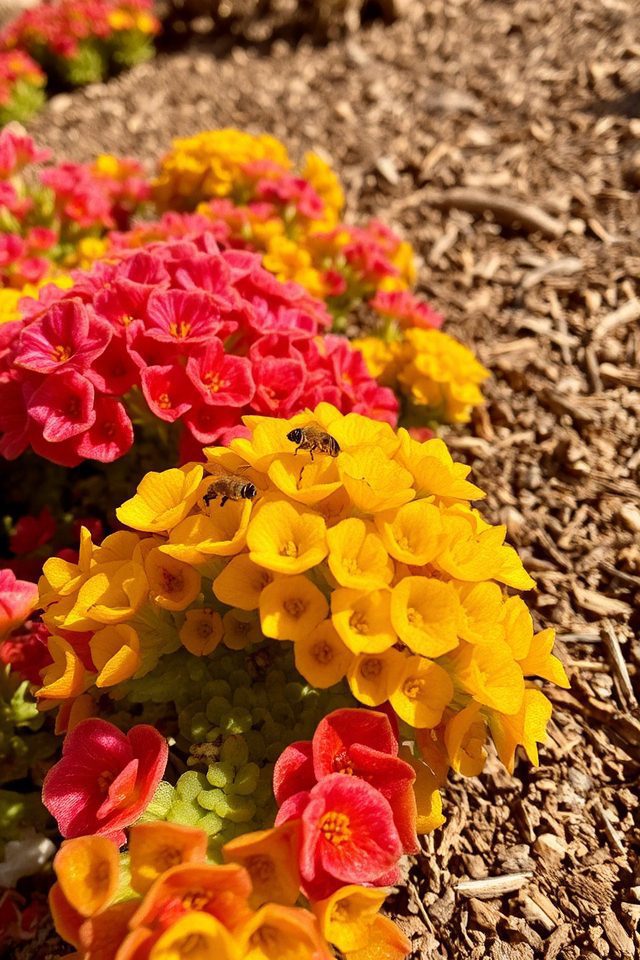
Sedum, a versatile and hardy succulent, is an excellent choice for late summer flower gardens, especially in drought-prone areas. Its fleshy leaves retain moisture, making it resilient against dry conditions while providing vibrant blooms in shades of pink, yellow, and red. This low-maintenance plant attracts pollinators and adds texture to your garden. Incorporate various sedum varieties to create stunning ground cover or rock gardens, ensuring a colorful display even when the temperatures soar.
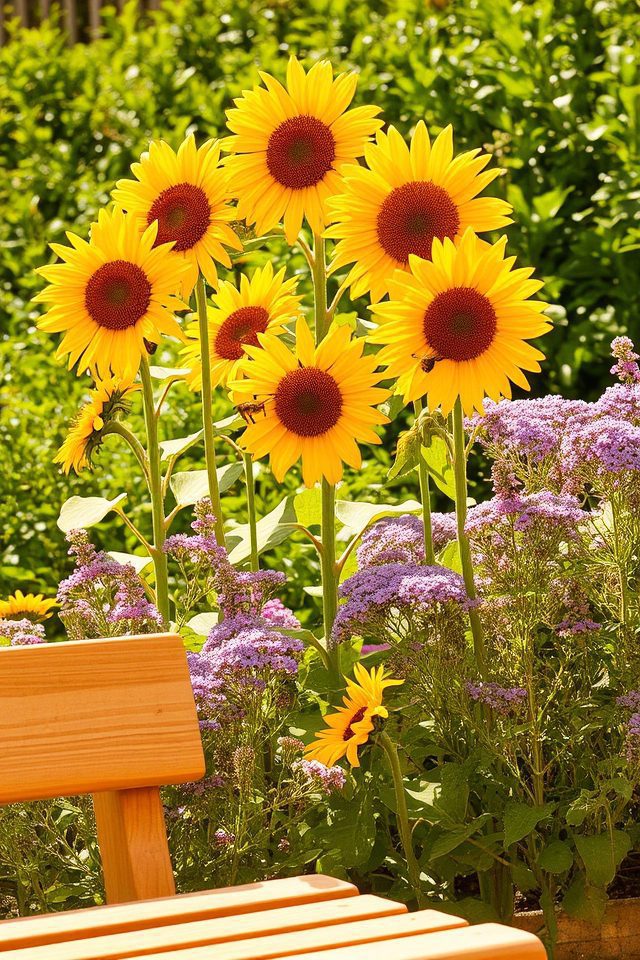
Sunflowers are the perfect addition to any late summer flower garden, bringing vibrant color and a cheerful vibe. Their tall, bold stature creates a stunning focal point, while the bright yellow petals add warmth to the landscape. Sunflowers are also easy to grow and attract pollinators like bees and butterflies, enhancing the ecological value of your garden. Plant them in clusters or as a backdrop for shorter flowers to create a dynamic visual contrast that will brighten your outdoor space.
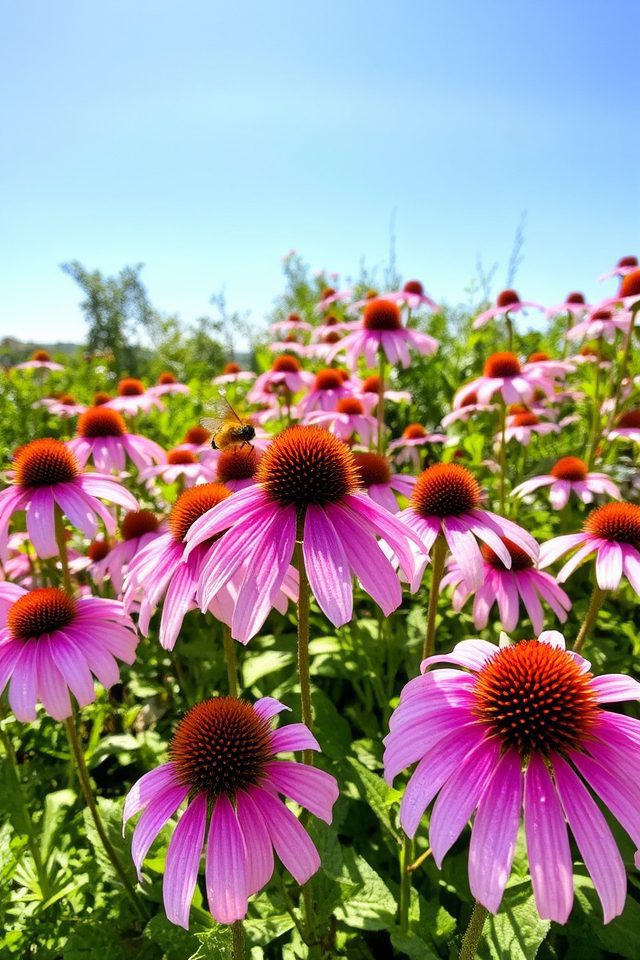
Echinacea, commonly known as coneflower, is an excellent choice for a late summer flower garden due to its long-lasting blooms and resilience. With vibrant petals in hues of purple, pink, and white, these hardy perennials attract pollinators such as bees and butterflies. Echinacea thrives in well-drained soil and full sun, making it low-maintenance and perfect for providing a burst of color as other flowers fade. Plus, they can also be dried for medicinal uses or for winter arrangements!
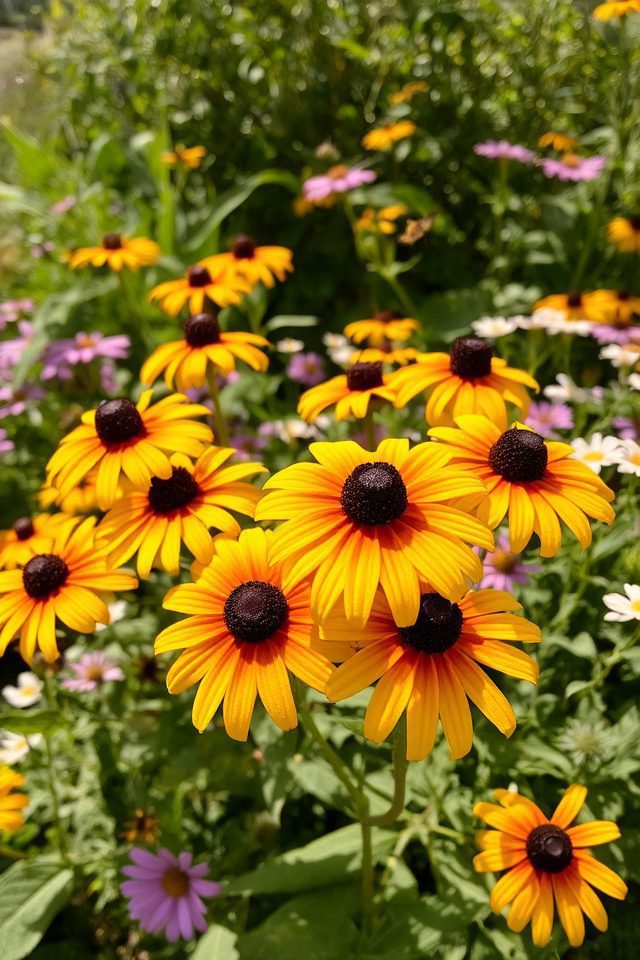
Black-eyed Susans are a vibrant addition to any late summer flower garden, boasting cheerful yellow petals and a striking dark center. These hardy perennials thrive in various soil conditions and love sunny spots, making them easy to care for. Their bright accents can elevate the visual appeal of your garden, attracting pollinators like bees and butterflies. Plant them in clusters or alongside other complementary flowers to create a lively, colorful display that lasts well into the fall.
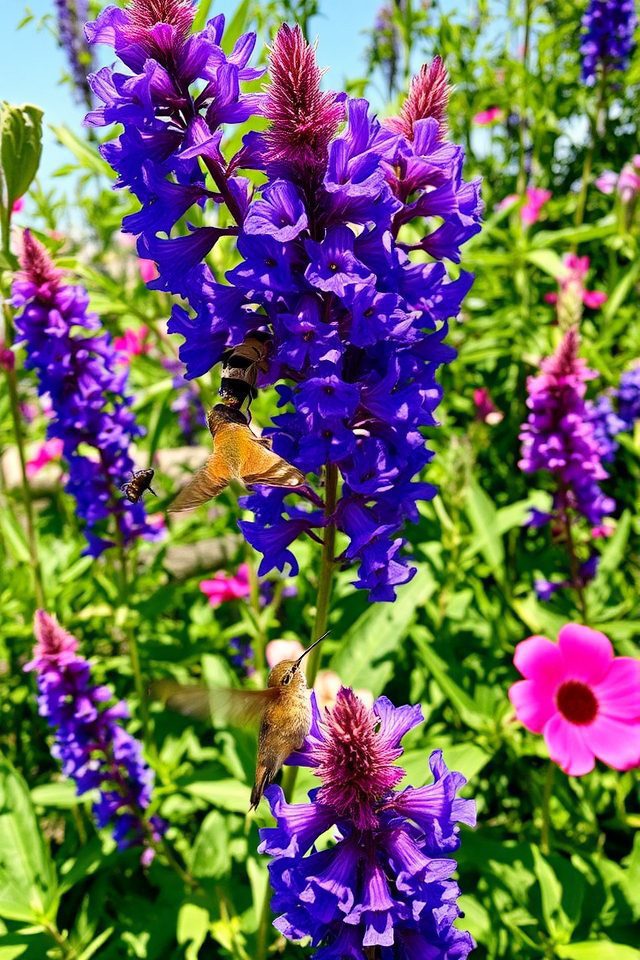
Salvia is an excellent choice for late summer gardens, particularly for attracting pollinators. With its vibrant colors and nectar-rich flowers, this perennial blooms continuously from summer into fall, providing a reliable food source for bees, butterflies, and hummingbirds. Available in various species and sizes, salvia thrives in well-drained soils and sunny locations. Incorporating salvia into your garden not only enhances its beauty but also supports local biodiversity well into the cooler months.
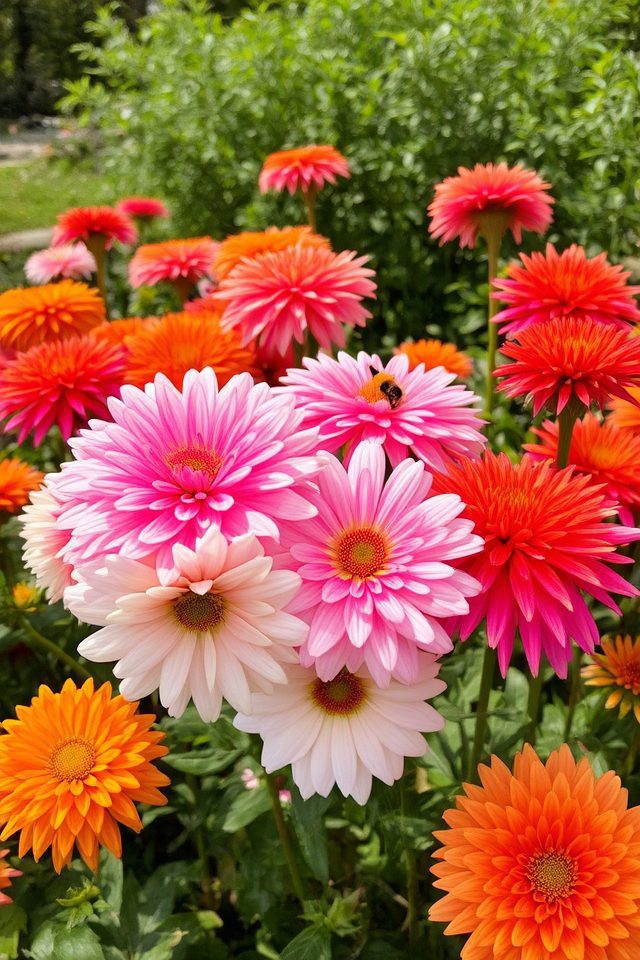
Dahlias are the stars of late summer gardens, showcasing an impressive diversity in shape, size, and color. These vibrant blooms range from the delicate pom-poms of ball dahlias to the striking, spiky forms of cactus dahlias, offering countless options for gardeners. Their ability to thrive in various conditions and attract pollinators makes them a must-have. Plant them in clusters for a dramatic impact or mix them with other late bloomers to enhance your garden’s overall appeal.

Zinnias are a fantastic choice for late summer gardens, offering a burst of bold, vibrant hues that can elevate any outdoor space. These hardy annuals thrive in full sun and come in an array of colors, from fiery reds and bright yellows to soft pinks and purples. Their sprawling blooms not only attract pollinators like butterflies and bees but also provide a cheerful focal point for your garden. Consider interspersing zinnias with other late-blooming flowers to create a stunning, colorful tapestry that lasts until the first frost.
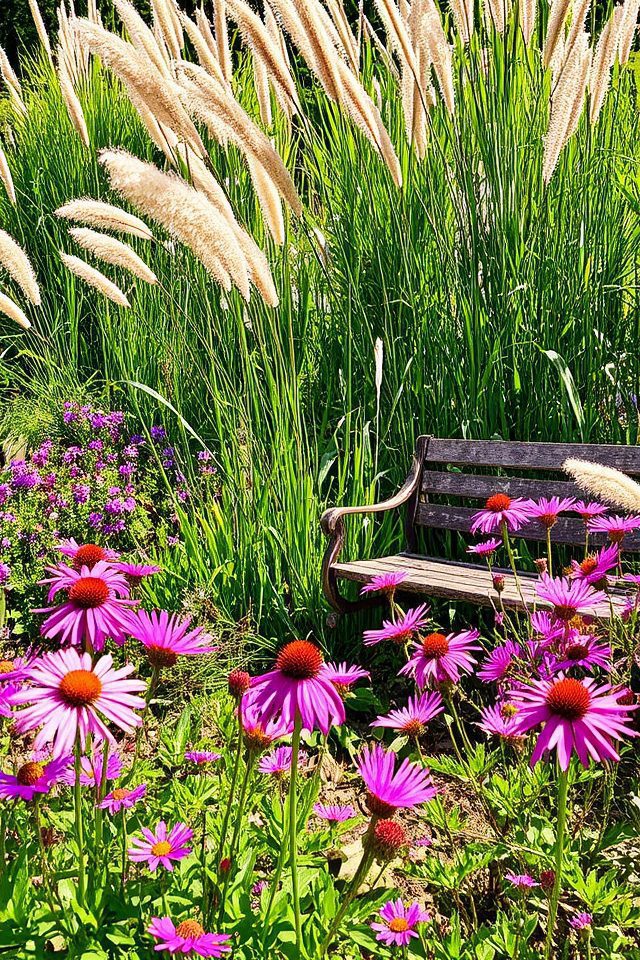
Ornamental grasses add dynamic texture and movement to your late summer flower garden, enhancing its overall visual appeal. With their varied heights and colors, grasses like Miscanthus, Panicum, and Calamagrostis can serve as striking backdrops for blooming perennials. They also provide contrast to softer flowers, introducing a sense of elegance and structure. Additionally, these low-maintenance plants offer seasonal interest, swaying gently in the breeze and catching the warm sunlight, making your garden a vibrant retreat.
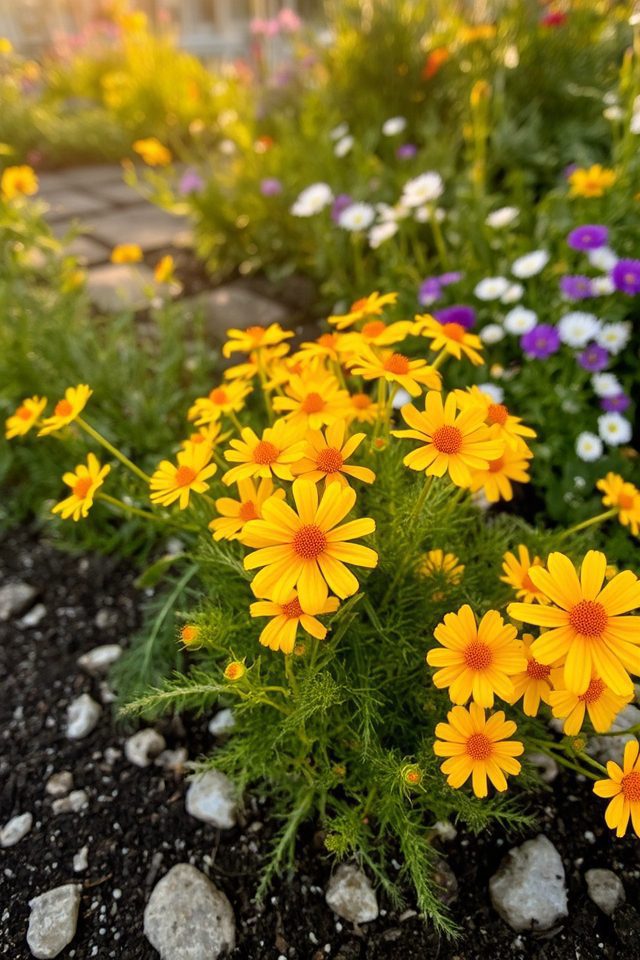
Coreopsis, also known as tickseed, is an outstanding choice for late summer gardens due to its prolonged blooming period and vibrant colors. These resilient perennials produce bright yellow and orange flowers that attract butterflies and pollinators, adding life to your garden. They thrive in well-drained soil and full sunlight, making them low-maintenance. By planting coreopsis, you can enjoy a splash of cheerful color that lasts well into the fall, enhancing your late summer landscape beautifully.
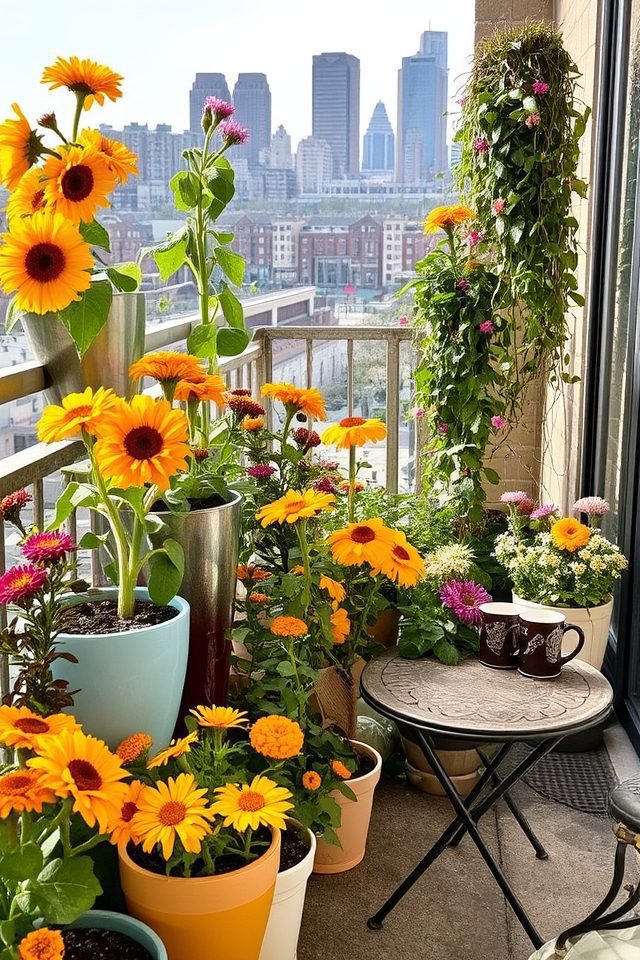
Urban-friendly container gardens are an excellent way to bring late summer blooms to small spaces. Utilizing pots and planters allows city dwellers to enjoy vibrant flowers, even in limited areas like balconies or patios. Consider using a mix of annuals and perennials, such as sunflowers, marigolds, and asters, to create a colorful display. Opt for stylish containers that complement your home décor, and incorporate vertical planters to maximize space while adding height and visual interest to your urban garden.
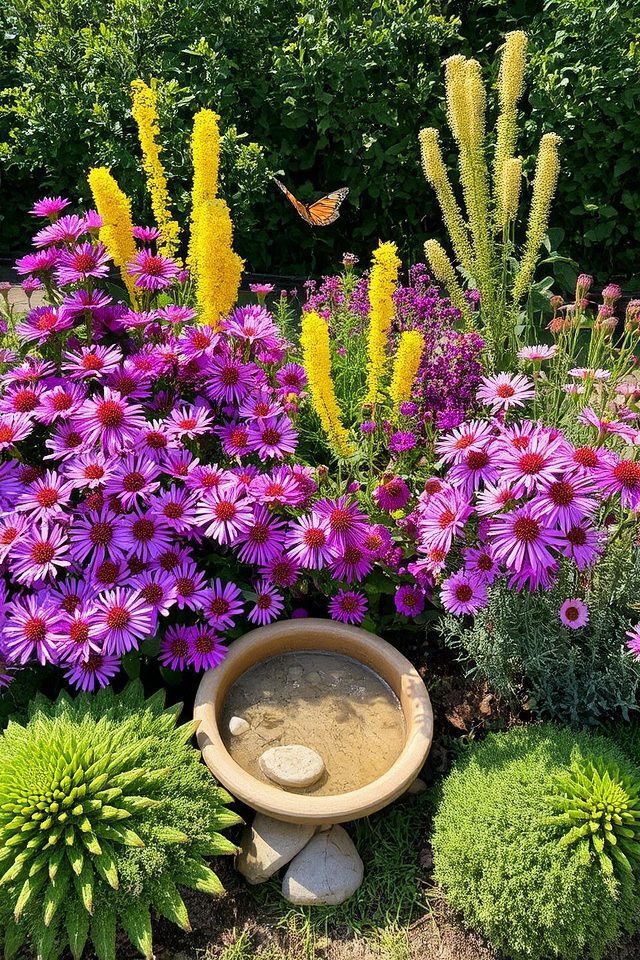
Creating a butterfly garden with late bloomers is a delightful way to attract these beautiful creatures while ensuring your garden remains vibrant through the end of summer. Incorporate plants like asters, sedums, and goldenrods, which provide essential nectar for butterflies. Choose a sunny spot and group plants in clusters to make it easier for butterflies to find food. Add elements like shallow water sources and flat stones for basking, creating a welcoming habitat for these pollinators.
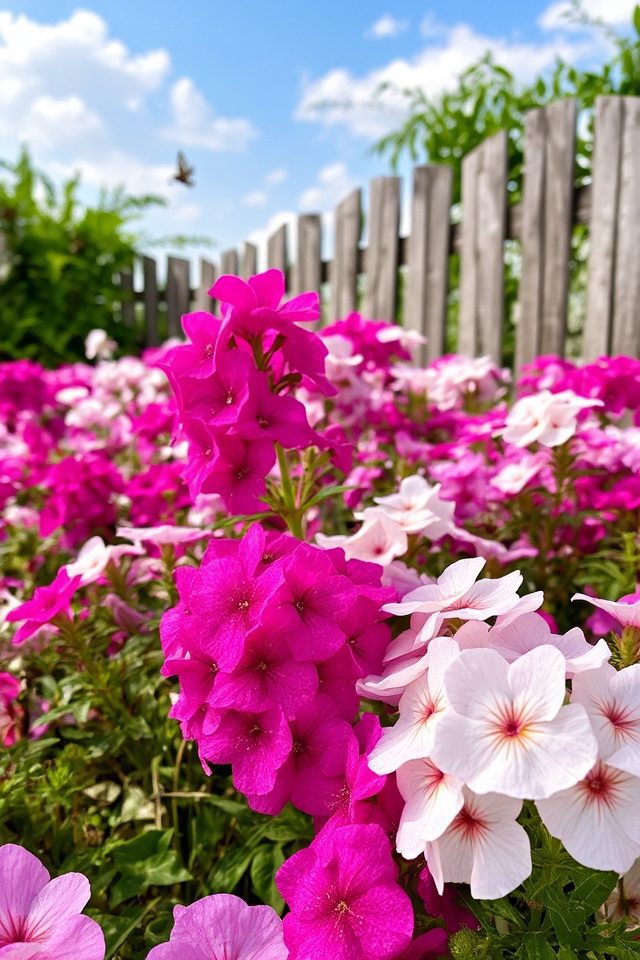
Phlox is an excellent choice for late summer flower gardens, providing a vibrant burst of color that can brighten any landscape. These hardy perennials come in various shades, from bold pinks and purples to soft whites and reds, allowing for versatile garden arrangements. They thrive in full sun and attract pollinators, making them not only beautiful but also beneficial for your garden ecosystem. With their long-lasting blooms, phlox will keep your garden lively as summer shifts to fall.
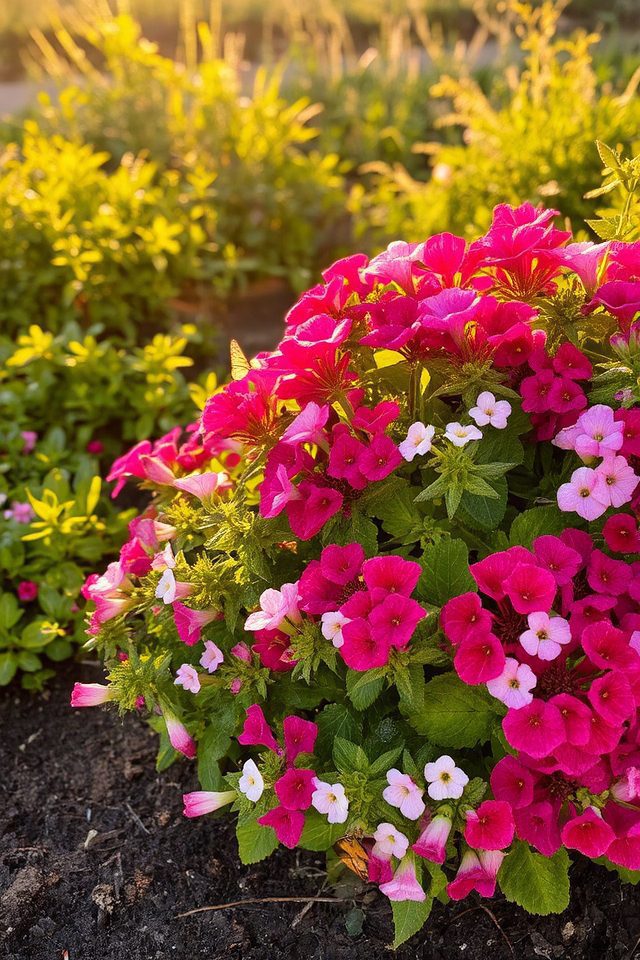
Verbena is an excellent choice for late summer gardens, offering vibrant, resilient blooms that thrive even in the heat. This hardy plant comes in various colors, from purple and red to white and pink, bringing a burst of joy to any garden. With a tendency to attract butterflies and other pollinators, it not only enhances the aesthetics of your space but also supports local wildlife. Planting verbena in well-drained soil and full sun will guarantee a stunning display throughout the season.
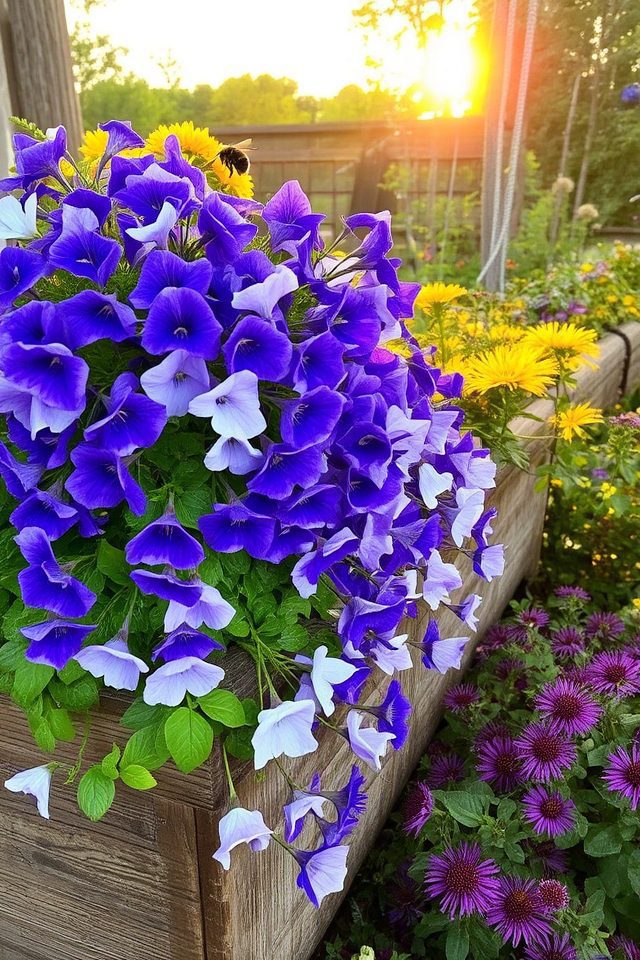
Incorporating lobelia into your late summer flower garden adds vibrant splashes of color that can brighten up any space. Known for its cascading growth, lobelia comes in shades of blue, purple, and white, making it a versatile choice for containers, hanging baskets, or as a border plant. Its delicate flowers attract pollinators, providing a lively buzz to your garden. Pair lobelia with other late bloomers for a harmonious and visually striking seasonal display.
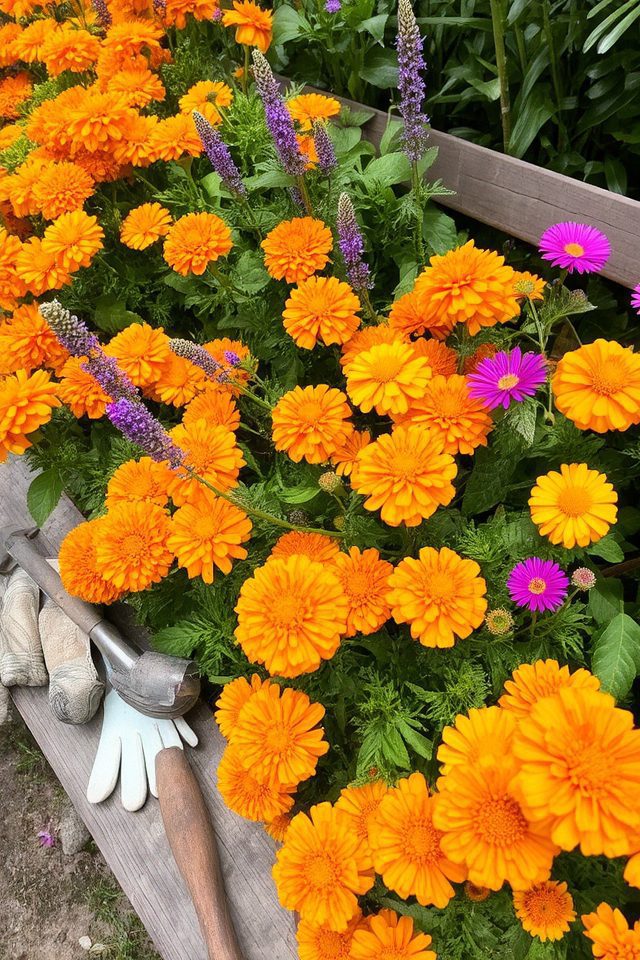
Marigolds are a vibrant addition to any late summer flower garden, offering both aesthetic appeal and practical benefits. These cheerful blooms not only infuse your garden with bright hues of orange and yellow but also serve as effective pest control allies. The strong scent of marigolds deters common garden pests like aphids and nematodes, helping protect neighboring plants. Planting marigolds in strategic spots can enhance the beauty of your garden while safeguarding it from harmful insects.
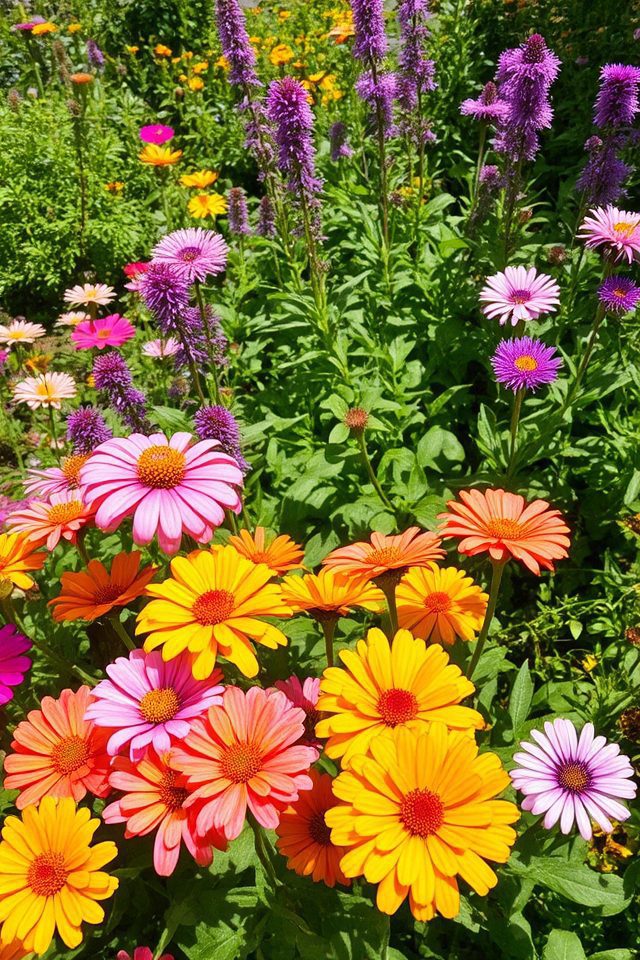
Mixing perennials and annuals in your late summer flower garden creates a vibrant and dynamic display. Perennials, with their lasting presence, provide a reliable backbone, while annuals infuse splashes of color throughout the season. Choose perennials that bloom in late summer, such as asters and sedums, and pair them with hardy annuals like zinnias or cosmos. This combination guarantees your garden remains colorful and engaging, extending the beauty of your blooms well into the fall.
By transforming your garden with these late summer flower ideas, you won’t just extend your blooms — you’ll create a floral masterpiece that dazzles the neighborhood and turns heads! Imagine a riot of colors, scents, and textures that beckon pollinators and enchant passersby. Your garden could become the envy of the entire block, overflowing with vibrant hues well into fall. Embrace this floral adventure and watch your landscape morph into a late-season sanctuary that’s nothing short of spectacular!
